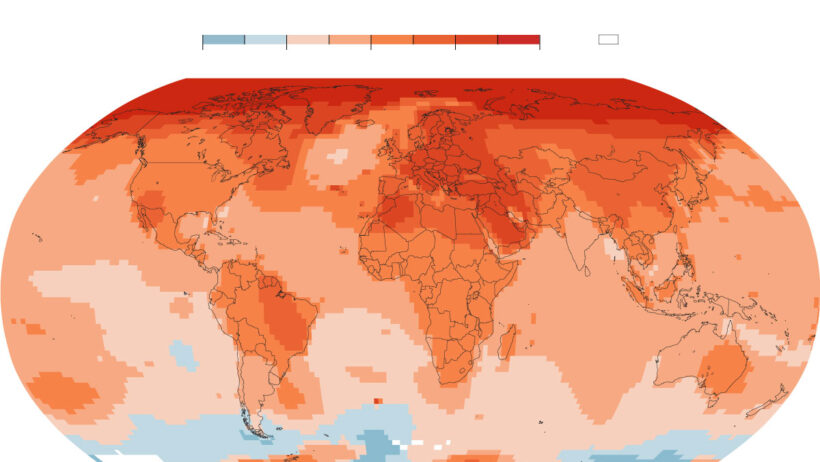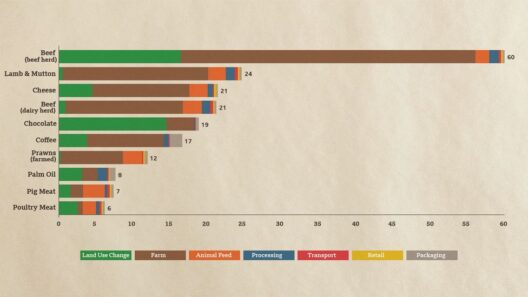Climate change has emerged as one of the predominant environmental challenges of our time, prompting fervent discussion about the trajectory of our planet’s climate. We often hear the catchphrase, “Is Earth getting hotter or colder?” Presently, an element of whimsy can be inserted into this inquiry: Imagine a world where the frivolous debate over sinking glaciers and soaring temperatures can be distilled into a simple yes or no. However, the complexities embedded within this conundrum unravel a vast tapestry of scientific evidence indicating that, unequivocally, the Earth is getting hotter. This warming phenomenon heralds real and tangible effects that reshape our natural and societal landscapes.
The foundation of this warming trend lies within the concept of global warming, a facet of climate change characterized primarily by the increase in Earth’s average surface temperature. This escalation is primarily attributable to the accumulation of greenhouse gases, such as carbon dioxide (CO2), methane (CH4), and nitrous oxide (N2O), in the atmosphere. These gases trap heat in the Earth’s atmosphere—a mechanism known as the greenhouse effect—resulting in a rise in temperatures that can cause far-reaching consequences.
The effects of global warming manifest visibly in several significant ways, each addressing how the world around us is transforming. One of the most conspicuous indicators of climate change is the warming of our oceans. The oceans absorb more than 90 percent of the excess heat generated by greenhouse gases. This warming leads to alarming phenomena such as coral bleaching, which jeopardizes marine biodiversity. Reefs, often dubbed the “rainforests of the sea,” are vital ecological structures that host myriad species. Their degradation threatens ecological balance and, by extension, human livelihoods reliant on healthy marine ecosystems.
Moreover, the ramifications extend onto terrestrial habitats as well. During the last century, average global temperatures have escalated, disrupting weather patterns globally. This disruption propels an increase in extreme weather events. Hurricanes and typhoons, for instance, are becoming increasingly ferocious, fueled by warmer ocean waters. The frequency and intensity of heatwaves are likewise escalating, creating adverse health risks among populations, particularly the most vulnerable. This escalation in extreme weather not only damages infrastructure but also exacerbates food insecurity by impeding agricultural productivity.
As for the ice caps and glaciers, compelling evidence confirms that these crucial natural reservoirs are receding at alarming rates. The Arctic ice cap has diminished by over 70 percent in the last 40 years. This thawing contributes to rising sea levels, endangering coastal communities worldwide. Islands and coastal cities face the stark future of submersion; families are already being displaced. This dilemma incites complex socio-political challenges, as populations seek refuge and resources in increasingly inhospitable environments.
One might wonder, how do these transformations unfold on a micro level? For instance, let’s consider the subtle shifts in ecosystems. Warmer temperatures extend the distribution of certain species, enabling some to thrive while rendering others vulnerable. This altered species distribution disrupts the intricate web of ecological interactions, posing existential threats to species that cannot adapt quickly enough.
Additionally, plant phenology—essentially, the timing of life cycle events—has been disrupted. Many flowering plants now bloom earlier in the year due to milder winters and longer growing seasons. While this may initially seem beneficial for agriculture, the misalignment with pollinators’ life cycles can lead to detrimental outcomes for food production and biodiversity. Nature, it seems, is not as forgiving as we might hope.
Equally alarming is the increasing prevalence of wildfires, exacerbated by hotter and drier conditions. Regions that once thrived with lush greenery are increasingly prone to infernos that consume vast tracts of land, wildlife, and human habitation. These fiery events not only foster loss of biodiversity but contribute further to greenhouse gas emissions, creating a vicious cycle that fuels more warming. The interplay of these environmental phenomena paints an alarming tableau of the future if climate action is not undertaken.
The conversation around global warming also encompasses economic implications. Adaptation strategies possess tangible costs and promise to strain resources. Communities need to enhance their resilience to climate effects—this includes repairing aging infrastructure, implementing water conservation measures, and integrating renewable energy sources into power grids. The financial burden often disproportionately affects marginalized communities, further entrenching existing inequalities.
Effective action relies not merely on elevating public awareness but on galvanizing a structural transformation across various sectors, including energy, transportation, and agriculture. Policymakers must prioritize comprehensive climate strategies grounded in scientific evidence. This mandates an urgent shift toward renewable energy adoption, reforestation initiatives, and sustainable agricultural practices, among other strategies to mitigate climate impacts.
As we endeavour to address the climate crisis, one fundamental question arises: Are we prepared to confront the intricate challenge of global warming? It beckons an exploration into our collective stewardship of the Earth. In understanding that our planet is indeed growing hotter, we must also recognize that with this knowledge comes responsibility. The call of the hour is not merely to contemplate whether the Earth is getting warmer; it is to act decisively, collectively, and meaningfully in curbing this trend for present and future generations.
In conclusion, the notion that Earth is on a warming trajectory is grounded in a plethora of scientific data and is accompanied by numerous adverse effects that affect ecosystems, human health, and socio-economic structures. While our planet’s climate is undeniably changing, the power to alter this course lies within our grasp. Through conscientious action and dedicated advocacy, we can mitigate the impacts of global warming and nurture a sustainable future on this planet we call home.






